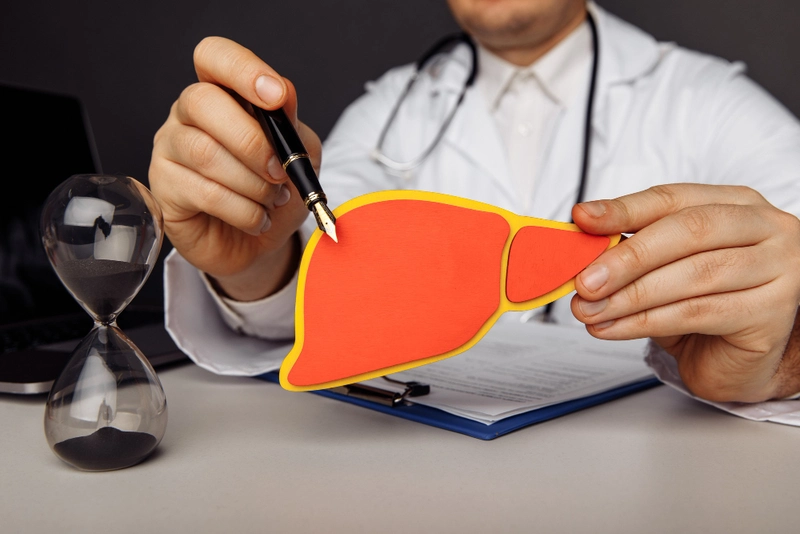- Published on: Jun 24, 2025
- 3 minute read
- By: Secondmedic Expert
Joint Pain In Rainy Weather – What Doctors Say
When the skies turn grey and the rain begins to fall, many people start to feel an all-too-familiar ache in their joints. If you or someone you know often says, “I can feel the rain in my knees,” you’re not alone. Joint pain in rainy weather is a real concern for millions, especially those with arthritis or past injuries. But is this just an old myth or is there actual science behind it? Let’s break it down with what doctors and experts have to say.
Why Do Joints Hurt More in the Rain?
Many people report increased joint pain, stiffness, or discomfort during rainy or humid weather. There are a few reasons why this might happen:
1. Drop in Barometric Pressure
Doctors say that when it rains, the atmospheric or barometric pressure drops. This decrease may allow tissues in the body to expand slightly. For people with sensitive joints, this expansion can irritate nerves and lead to pain.
2. Cold Temperatures
Rain often brings cooler temperatures. Cold weather can cause muscles and joints to stiffen, reducing blood circulation and making movement more painful. People with arthritis may especially notice this.
3. Increased Humidity
Humidity can affect the way our body handles fluid. It may lead to inflammation or swelling around the joints, causing pain or discomfort in sensitive areas like knees, hips, and fingers.
4. Mood and Physical Activity
Rainy weather also tends to make people less active. Staying indoors and moving less can cause joint stiffness. Also, cloudy skies and gloomy days can affect your mood and lower your pain tolerance.
What Medical Experts Say
Dr. Anjali Mehta, Rheumatologist
“Patients often come to me complaining that their arthritis gets worse when it rains. While it may sound like an old wives’ tale, we do believe that weather changes—especially drops in pressure—can affect the joints.”
Dr. Rajeev Sharma, Orthopedic Surgeon
“People with old injuries or joint surgeries might have more nerve sensitivity. Weather changes can trigger inflammation or activate pain receptors in these areas.”
Dr. Sneha Kulkarni, Physiotherapist
“It’s important to keep joints mobile during rainy days. Movement improves circulation and prevents stiffness. Gentle exercises and stretching routines can help.”
Who Is Most Affected by Joint Pain in the Rain?
Joint pain in rainy weather doesn’t affect everyone, but certain groups are more likely to notice a difference:
-
People with Osteoarthritis or Rheumatoid Arthritis
-
Those with old joint injuries or fractures
-
Individuals with low Vitamin D or calcium levels
-
Elderly people whose joints are naturally more worn out
-
Women over 40, especially during menopause
Tips to Reduce Joint Pain During Rainy Days
The good news is that you can manage and reduce weather-related joint pain with simple steps. Here’s what doctors recommend:
Stay Warm
-
Use heating pads or wear thermal clothing.
-
Soak in a warm bath to relax your joints.
Keep Moving
-
Do light exercises like walking or yoga.
-
Stretch your joints regularly, even indoors.
Stay Hydrated
-
Drinking water helps maintain joint lubrication.
-
Avoid too much caffeine or salty foods, which may dehydrate you.
Eat a Joint-Friendly Diet
-
Include omega-3 rich foods like fish, flaxseeds, and walnuts.
-
Eat anti-inflammatory foods like turmeric, garlic, spinach, and berries.
Take Supplements if Needed
-
Consult your doctor about taking Vitamin D, calcium, or glucosamine supplements.
Maintain a Healthy Weight
-
Less weight = less pressure on your joints.
Home Remedies That May Help
Here are some simple remedies that people swear by during rainy days:
-
Massage with warm mustard oil or coconut oil
-
Use a hot water bottle on stiff joints
-
Apply a turmeric paste externally
-
Drink ginger tea—it’s a natural anti-inflammatory
-
Practice meditation to manage stress-related joint pain
When Should You See a Doctor?
While occasional discomfort is common, you should see a doctor if:
-
The pain is constant and not improving
-
You experience swelling, redness, or warmth around the joint
-
You can’t move the joint properly
-
You feel weakness or numbness
Doctors can run tests like X-rays, blood work, or MRIs to find the cause and provide treatment. Sometimes joint pain could be due to underlying issues like arthritis, gout, or autoimmune diseases that require medical attention.
Conclusion
If your joints start to ache the moment clouds appear, it’s not just your imagination. Weather changes—especially rainy days—can affect your body in surprising ways. From barometric pressure to low temperatures, several factors can contribute to joint pain in rainy weather. But the right mix of exercise, diet, and self-care can make a big difference.
So the next time you feel a dull ache in your knees as it starts to drizzle, listen to your body—but also follow what experts suggest to stay comfortable and pain-free.
Want to understand your symptoms better or need personalized advice? Talk to your doctor today and learn more about “Joint pain in rainy weather – What doctors say.”
Read FAQs
A. Joint pain may worsen due to a drop in barometric pressure, which can cause tissues to expand and press against nerves, especially in people with arthritis.
A. Yes, cold and damp conditions can stiffen muscles and reduce circulation, which makes joints ache more than usual.
A. While it’s more common in people with arthritis, even healthy individuals may experience temporary discomfort due to weather changes and reduced physical activity.
A. Warm compresses, light exercise, massage with warm oil, and anti-inflammatory foods like turmeric and ginger are effective.
A. Yes, especially if the pain is persistent, accompanied by swelling, or interferes with movement. Lab tests like the Arthritis Profile from Thyrocare can help diagnose underlying issues.
Our Services
Request A Callback
Recent Posts
Seasonal Flu vs Covid-19: 2025 Comparison
Jun 25,2025
Joint Pain in Rainy Weather – What Doctors Say
Jun 24,2025










